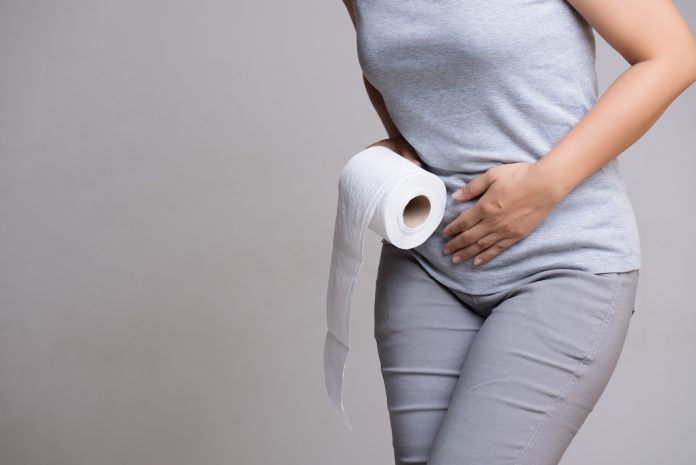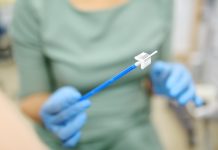Here, Dr Deborah Lee, Dr Fox Online Pharmacy, shares some of her top tips on how to prevent recurrent UTI’s in women
“Oh No! Not cystitis – again!” It’s a familiar cry. But just why is it that some women get repeated urine infections? What can be done to help?
What is a UTI?
Urinary tract infections (UTI’s) – often called cystitis – are very common. Around 50% of females have at least one UTI in a lifetime. If you’ve had the misfortune to have one, you will know only too well how unpleasant the symptoms can be. Sometimes you just can’t even get off the toilet, and the constant need to pee makes you grit your teeth and cry out in pain.
When you have a simple UTI, the infection is in the lower urinary tract – the urethra, the bladder. However, in a complicated UTI, it can spread upwards into the kidneys. This is far more serious. The way to detect a UTI is to identify and measure the bacteria in the urine by doing a midstream urine test – an MSU.
If you’ve got cystitis again, you’re not on your own – as 80% of UTI’s are reinfections – from a previous infection.
Why has the urine infection recurred?
UTI’s are described as follows –
- Isolated – A first-ever UTI, or a UTI at least 6 months after the last one.
- Unresolved – Antibiotic therapy has failed, and symptoms persist.
- Reinfection – The last treatment seemed successful, and a repeat urine test was negative, but more than 2 weeks after treatment, there is an infection with the same organism or a different organism.
- Relapse – The last treatment was successful, and a repeat urine test was negative, but less than 2 weeks later the same organism causes a recurrent infection.
What causes a UTI in women?
UTI’s are eight times more common in women than men. The most obvious reason for this is that women have a short urethra – the passageway for urine from the bladder to the outside world – whereas for men the urethra runs the entire length of the penis. It’s much easier for bacteria to get up inside the urethra and the bladder in women.
Bacteria, which naturally originate from the rectal area, leach out onto the perineum and find their way into the urethra, either by wiping, rubbing, sexual activity, or using lubricants, for example. The most common bacterium to cause a UTI is E.coli, which originates from the bowel.
8.6% of post-menopausal women have what is called asymptomatic bacteriuria. These are bacteria which are frequently detectable in the urine but often cause either no symptoms or just mild irritation. Evidence suggests this does not generally need to be treated.
Risk factors for UTI’s in women
The following risk factors increase the likelihood of a UTI –
- Difference between anatomy – for example in one study, women with recurrent UTI’s had a significantly shorter urethra-to-anus measurement than women without UTI’s.
- Recurrent bacterial vaginosis (BV)–when women have BV, they have an alteration in vaginal pH which favours the growth of E.coli as a potential urinary pathogen.
- Genetic factors – a specific, genetically predetermined, poor response to a urine infection has been identified in some women.
- P1 antigen – women possessing a P1 antigen have a propensity for invasion of the bladder by fimbriated organisms which have an increased ability to attach to the surface epithelium of the bladder.
- Being pregnant – this increases the risk of a UTI possibly because of its association with asymptomatic bacteriuria.
- Incomplete bladder emptying – can occur at any time but especially after surgery.
- Estrogen deficiency after menopause – this results in a thinning of the genital epithelium, which is then more easily traumatised. This can be effectively treated with the use of topical estrogen cream or pessaries. This is a local treatment, and different from taking formal HRT.
- Diabetes – around 1 in 70 people in the UK are living with undiagnosed diabetes. This remains a very important cause of asymptomatic bacteriuria, which predisposes to UTI’s.
- Voiding dysfunction – some women interrupt the urine stream and don’t empty their bladders properly for a variety of reasons
- Sexual activity – increased frequency of sexual intercourse, increased numbers of partners. One study linked recurrent UTIs to a new sexual partner in the past 12 months.
- Urinary catheters – often in the elderly.
Chlamydia – Other causes for UTIs include undiagnosed chlamydia. This can cause a type of chlamydia cystitis.
Sexually active young people aged 25 and under should have a chlamydia test even if they have no symptoms, and have this repeated before they start a new relationship or be tested if they develop any symptoms at any stage.
Although irregular bleeding is one of the most cited symptoms, chlamydia can cause urinary symptoms. Chlamydia can also occur in people of any age.
In the current COVID-19 pandemic, to avoid face-to-face contact, free chlamydia tests can be obtained online.
What to do with recurrent UTIs
- Drink lots of water – this helps flush the bacteria out of the bladder. The normal recommended fluid intake is 1.5 to 2 L per day (8 – 10 glasses of water.)
There is no published advice on how much to drink. However, in the short term, just use your common sense and keep drinking. If your symptoms persist – seek help.
- Relieve pain– Take some pain relief – such as paracetamol or ibuprofen (assuming you have no allergies/medical contraindications).
- Cranberry juice may not help – Unfortunately, research suggests that drinking cranberry juice is not effective for treating acute UTI’s.
- Urine alkalinisation – You can add ½ to 1 tsp of baking powder (bicarbonate of soda) to a glass of water and drink this periodically throughout the day (2 to 6 times). This will raise your urine pH and make the urine less painful when you pee. Only do this a short term measure – too much can be harmful. Do not delay getting medical help
- Peeing in the bath – Some women may find it easier to pass urine is a warm bath.
- Don’t take any left-over antibiotics – Or anything given to you by anyone else.
- Self-start regime agreed by your GP – You may have already agreed with your GP that if you had further symptoms, you would do a mid-stream urine specimen immediately, take it to the GP surgery and start your antibiotics right away.
UTI treatment without antibiotics
In fact, NICE 2018 guidelines on the management of UTI’s, suggest waiting 48 hours, and self-treating with increased fluids and pain relief first. Sometimes, cystitis symptoms will settle by themselves. However, if they are not improving, or if you any additional symptoms suggesting a more serious infection such as fever, loin pain or rigors, you must get medical help promptly.
Best antibiotics for a UTI
The first choice antibiotic is usually nitrofurantoin, fosfomycin or trimethoprim. There are alternatives. Antibiotic resistance is a big problem. It’s important to take your antibiotics as directed and finish the course. Symptoms usually settle after a few days.
How to provide a sample of midstream urine (MSU)
Sometimes its frustrating because you are eagerly awaiting a urine test result, but the urine test is contaminated. This makes the results difficult to interpret. You do need to follow instructions carefully if you are asked to give a urine sample.
Remember to wash your hands beforehand, and if you can, wash your genital area too. You must try not to contaminate the pot you are peeing into – this is sterile – so try not to touch the container near the top. Hold it at the base. When you start to pee, catch some urine mid-flow in the pot, without stopping the stream of urine. Screw the lid on immediately. Take the specimen to the doctors as soon as you can – this should be within 2 hours. If it’s longer than this keep the specimen in the fridge.
How to stop repeat UTIs
Here’s a list of hints and tips to help prevent further urine infections –
- Avoid using perfumed products on the genital area – These alter the skin pH and affect the local colonisation of microbes. All hygiene products including shower gels, soaps, douches and wipes contain fragrances, additives and preservatives which can damage the delicate skin in this region. Use very simple products only.
- Don’t wax or shave anywhere near your urethral opening.
- Peeing after sex – Always get up and pass urine after sex. Sometimes your doctor may give you a one-off antibiotic to take after sex if this appears to be linked to your UTIs.
- Wipe front to back – When you wipe yourself always wipe front to back and not the other way round.
- Itching or discharge – If you have additional symptoms such as itching or vaginal discharge you may need to have a test to check for other infections including candida, BV, and sometimes an STI check for chlamydia and gonorrhoea.
- Drink more water – A 2018 randomised controlled trial published in the Journal of the American Medical Association (JAMA), studied 140 premenopausal women with recurrent UTIs into either drinking an extra 1.5L water per day or no change in water consumption, for 12 months. The results showed a 50% reduction in recurrent UTIs in the group who drank more water.
- Regularly drinking cranberry juice – This may help ward off recurrent Cranberries seem to prevent attachment of E.coli to the bladder wall.
- Local estrogen – If you are approaching menopause, or, at or after menopause, and UTIs have been a problem, talk to your doctor about the use of a topically applied, vaginal estrogen cream, or pessary.
- Low-dose antibiotics – Sometimes, your doctor may suggest long-term, low-dose antibiotics if recurrent UTI’s have been a big problem.
Additional treatments to prevent recurrent UTI’s
There are various alternative approaches to managing women with recurrent UTI’s, but these are all options for which some benefit has been reported, but more research is needed. You may want to discuss these with your specialist.
- Methenamine – A 2012 Cochrane data review conducted a review of clinical trials since 1980 and concluded the use of methenamine may have some benefit for preventing UTI’s in the short term for patients without any abnormality of the renal tract. It is also licensed for use to treat asymptomatic bacteriuria.
Methenamine is an antibiotic, which although generally safe, should not be used with sulphonamides such as trimethoprim, and is not suitable in pregnancy, breastfeeding, or for people with kidney disease. The dose is 1g twice a day.
- D-mannose – This is a sugar found in fruits such as berries, notably cranberries, also peaches and tomatoes, for example.
When bacteria invade the bladder wall, they stick to the surface epithelium with special filaments called type-1 pilli. They then form a biofilm within the bladder. D-mannose interrupts the adhesion of these pilli to the bladder wall.
The journal World Journal of Urology reported a small, 2014 study, of 98 women with recurrent UTIs, randomised to take either the antibiotic, nitrofurantoin 50 mg/day, D-mannose 2g in 200ml water/day, or no prophylaxis, for 6 months.
The results demonstrated that both the nitrofurantoin and the D-mannose group had a similar, significant reduction in recurrent UTIs compared to the no prophylaxis group. The D-mannose group also had a significantly lower risk of side effects.
- Bladder instillations – Some authorities believe women develop recurrent UTIs due to an abnormality in the glycosaminoglycan (GAG) layer of the bladder wall. Hyaluronic acid and chondroitin sulphate can be directly instilled into the bladder, with some good results
The journal Urology reported a 2018 study in which a group of women with a history of recurrent UTI’s, were given a weekly bladder instillation of heparin/Solu-Medrol solution, for 6 weeks. Only around 18% of women went on to have recurrent UTIs over the next 6 months.
- Probiotics – Because urinary tract infections are believed to arise for bacteria found in the gut, there has been much interest in the role of the gut microbiome in the development of UTI’s. Various studies have investigated the link.
One 2003 study in the American Journal of Clinical Nutrition found a significant reduction in UTIs associated with regular consumption of fruit juices, notably berry juices, and fermented milk products containing probiotics consumed at least 3 times per week.
A more recent 2016 study in the Journal of European Urology reported a group of 42 women with recurrent UTIs who took 20mg cranberries, 1 billion heat-killed L. rhamnosus SGL06, and 750mg vitamin C three times a day for 20 consecutive days. They were then advised to stop taking these supplements for 10 days, and then to repeat this cycle three times.
At 3 months and six months after the study, the authors reported respective 72.2% and 61.1% favourable response to treatment. The response was favourable – if the urine analysis was negative and they reported no symptoms. As an additional benefit, there were no major side effects from taking the probiotics.
No association between recurrent UTIs and panty liners/period panties
There has been recent interest in the use of period pants and panty liners. Period panties appear to be suitable for everyone. They contain organic cotton, wool, and bamboo which are all hyper-absorbent. Cotton and wool allergies have are very rare. Period panties are also chlorine, fragrance and latex-free.
A 2007 publication in the European Journal of Obstetrics, Gynaecology and Reproductive Biology, concluded that complaints that panty liners caused an increased frequency of vulvovaginal candidiasis or recurrent UTIs, were unsubstantiated.
Having reviewed the evidence, they found no association between the use of the panty liner and genital moisture, skin surface temperature, and no change in the colonisation of microbes in this region.
Of note, they found no evidence that the use of a panty liner affected colonization of the urethra – the entry to the female bladder.
The authors commented that having studied 13 prospective trials of panty liners they fund no adverse effects. Also, that the experience of women in specialist vulval clinics, revealed low levels of complaints about panty liners, about their vulval symptoms.
Final thoughts
If you keep getting urine infections, it can be very distressing. There are some ‘do’s and don’t’s – here to help you. Even during COVID-19, you can still discuss this with your GP over the phone. You could, for example, have some urine pots and antibiotics at home to start straight away if you need them. Also, take heart – as some new treatments options as outlined above may be available for you.
For more information
- The British Urological Society recommendations – Recurrent Cystitis
- Patient Choice – Urinary Tract Infections in Adults
- NICE – Decision Aid – Reducing the chance of recurrent urinary tract infection (UTI) in post-menopausal women











